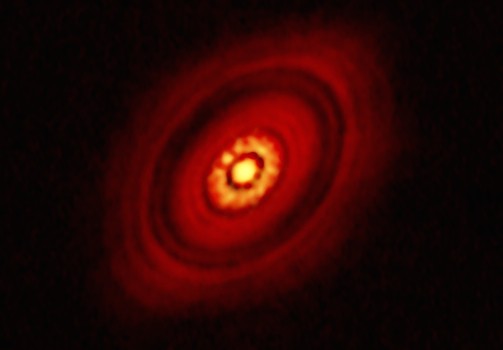Whoa…sweet!
They have never seen anything like this before. There have been some cool pics and locating of dusty disks and the like in the past. However, the incredible detail they were able to spot in this particular formation has never been seen before. Here is a bit more detail on who and how they found this incredible area to watch:
New images of a young star made with the Karl G. Jansky Very Large Array (VLA) reveal what scientists think may be the very earliest stages in the formation of planets. The scientists used the VLA to see unprecedented detail of the inner portion of a dusty disk surrounding the star, some 450 light-years from Earth.
The star and its disk were studied in 2014 with the Atacama Large Millimeter/submillimeter Array (ALMA), which produced what astronomers then called the best image ever of planet formation in progress. The ALMA image showed gaps in the disk, presumably caused by planet-like bodies sweeping out the dust along their orbits. This image, showing in real life what theorists had proposed for years, was surprising, however, because the star, called HL Tau, is only about a million years old — very young by stellar standards.
The fact that it is only 450 light years from Earth is extremely close by cosmic standards. What do you think we will learn from this?
Let’s find out more about what they saw on the next page
